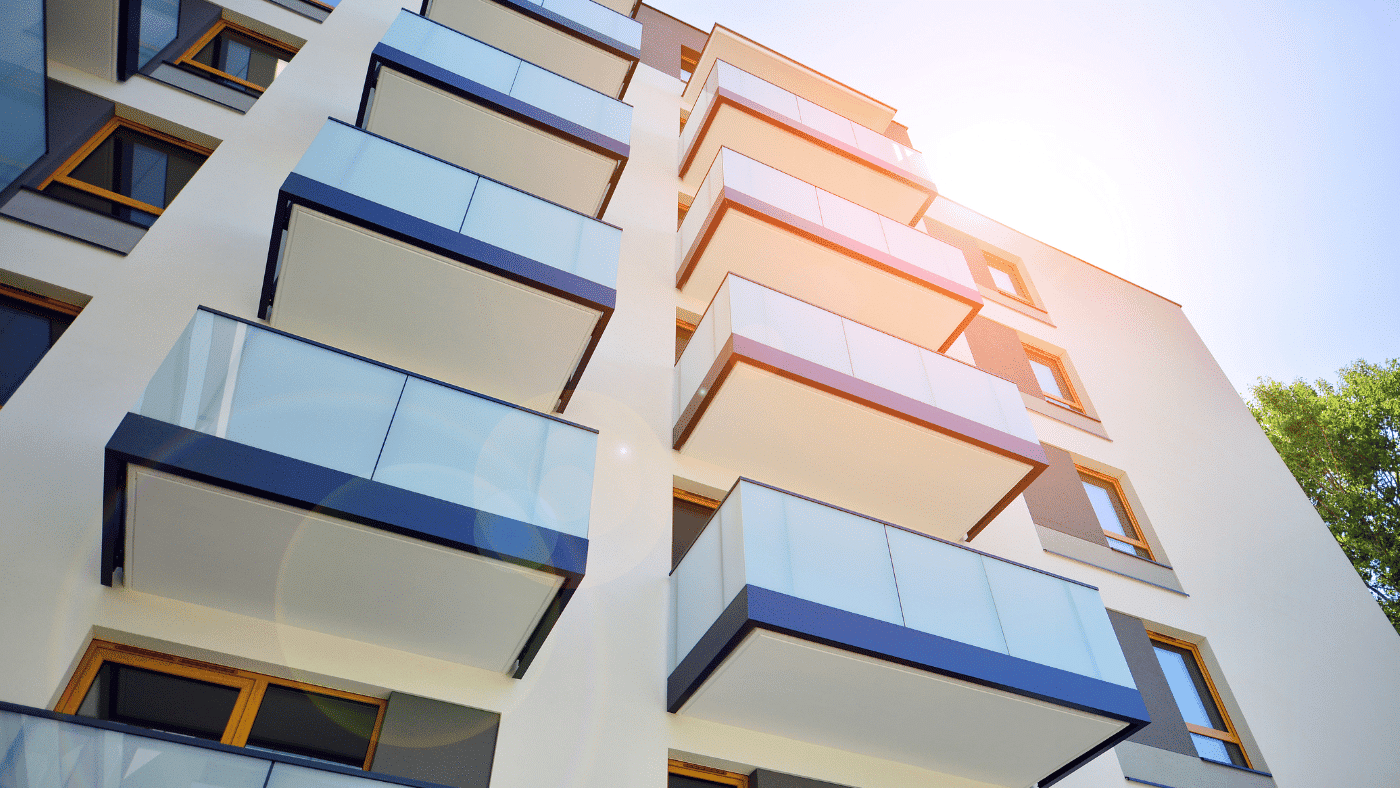The earliest balconies date back to ancient times and have grown in popularity over the centuries, providing occupants with a private outdoor space for fresh air, sunshine and a small garden. The balcony systems of the past were comprised of stone and heavy timber: very durable materials. Today, most balconies consist of dimensional lumber (2×10’s, 2×12’s, etc.) and plywood sheathing, along with a waterproof coating/walking surface. Unlike balconies constructed long ago, contemporary balconies are considerably more fragile, as structural integrity may be compromised relatively quickly when continuously exposed to moisture. For this reason, on-going inspection, maintenance and repairs to balconies are critical to long-term performance and ensuring they are safe for occupant use.
This article offers simple, initial steps that a multi-family building owner or manager can take to assess if balconies are performing as intended.
The ABC’s of Balcony Types
Now a common feature in multi-family housing, contemporary balconies are constructed in a variety of ways including:
- Waterproof membrane covered with a walking surface (such as a lightweight concrete topping slab, mortar/tile, or pedestal pavers)
- A pedestrian traffic coating – installed over wood sheathing
- A pedestrian traffic coating – installed over a concrete deck
- Open deck framing with deck boards or manufactured steel balconies
In this article, we focus on Type 1 balconies, comprised of a waterproofing membrane covered with a walking surface and Type 2 balconies, made up of wood sheathing covered with a pedestrian traffic coating.
VERTEX recently conducted a survey of 100 multi-family projects nationwide and constructed within the last five years. From this survey, we found that the most prominent balcony type consisted of a waterproofing membrane covered with a walking surface. More specifically, the most prominent type of balcony used a lightweight concrete topping slab (as the walking surface) placed over a waterproofing membrane. These balconies typically consist of wood framed joists covered with wood sheathing, a fluid or self-adhered sheet membrane waterproofing system and drainage composite, and then covered by a concrete topping slab (see Figures 1 and 2 below). Once installed, the assembly’s waterproofing membrane is completely concealed and inaccessible.


In contrast, the balcony assembly using a pedestrian traffic coating does not have a concealed waterproofing system, but rather uses a material that serves as both the balcony’s waterproofing system and walking surface. Typical pedestrian traffic coatings utilize a reinforced, multi-coat system with sheet metal flashings at balcony perimeters and at wall-to-balcony interfaces. As the traffic coating system is not concealed by an additional walking surface, the waterproofing is accessible for inspection and on-going maintenance. Typical pedestrian traffic coatings have a service life of approximately 7-10 years or more, depending on the system and location/environment.


An Ounce of Prevention: Basic Balcony Assessments Can Reveal the Issues You Need to Know About
If you are a property owner or manager, periodically assessing your balconies to guard against water intrusion is a prudent measure to take to increase structural longevity and safeguard occupants. While the following information does not take the place of balcony inspections by building professionals, laypersons can get a head start on addressing potential issues by keeping an eye out for the following conditions:
Inadequate Slope
Does the balcony surface have difficulty draining? Does water pool / pond on the surface or is staining visible on the surface of the balcony that suggests water ponding has been a regular occurrence in the past? While balconies should ideally have ¼-inch per foot slope, any amount of positive slope is better than no slope or reverse slope (i.e. the balcony surface sloping away from the point of drainage). Ponding water can cause premature degradation of a traffic coating material over time.
Traffic Coating Surface
For balconies using a traffic-coating surface, the traffic coating is essentially an exposed waterproofing membrane. For the traffic coating to keep water from reaching the sheathing and framing, the surface needs to be free from splits, fractures and spalls that can become avenues for water entry. Assessing the surface for any of these conditions is important and a relatively simple way of checking for any obvious areas of damage where the traffic coating may be compromised. Fractures/splits may be caused by age or weather-related degradation, while gouges or spalls may be caused by occupant use (such as impact damage from falling objects). Areas of apparent ponding water coupled with openings in the traffic coating surface can pose elevated risks for water damage to the underlying wood framing/sheathing.
Unsealed Penetrations
Penetrations in a balcony surface, like those associated with railing post fasteners, need to be sufficiently sealed. Such penetrations should be assessed to see if the penetrations are sufficiently sealed to keep surface water from entering the balcony assembly at fastener locations. Note, however, that an unsealed fastener is not always easy to identify from a visual inspection alone.
Balcony Surface Deflection
Water that bypasses the waterproofing and reaches the plywood sheathing can cause the sheathing to become soft and will deflect easily when pressed on in localized areas. For balconies using a traffic coating surface, the entire surface should feel firm when pressed on and not soft or spongy in any areas. If the balcony has a concrete topping slab, plywood sheathing damage may not necessarily translate into cracking of the concrete, and therefore may not be as apparent.
Soffit Staining
Assessing the ceiling or “soffit” below a balcony can be very telling as well. If there are any signs of water staining, e.g. discoloration at the perimeter or field of the ceiling below the balcony, then there is a possibility that water intrusion is occurring through the balcony. However, it’s critical to note that the absence of water staining on the ceiling below a balcony does not necessarily mean that water intrusion is not occurring.
Proper Inspection and Maintenance are Key to Structural Integrity
Balconies need to be properly inspected and maintained to guard against water damage and to increase longevity. If your property happens to located in California, those inspections are required by the new balcony inspection laws. You may identify potential areas of concern early on, before significant damage to wood framing/sheathing occurs by conducting a cursory inspection of balconies with the recommendations detailed above, including:
- assessing for proper slope
- identifying any splits or fractures in the traffic coating membrane
- searching for potential unsealed penetrations
- assessing for deflection of the balcony surface
- assessing for staining on the soffit below the balcony
Regardless of what you find, it is a best practice to have balconies further assessed by qualified architects, engineers or construction professionals with experience in balcony evaluations. With techniques such as thermal imagery and limited deconstructive evaluations, it is possible to determine with certainty if water intrusion is occurring at your balconies. With this information, proper repair methods can be implemented to correct any sources of water intrusion and any resultant damage.
If you have any questions regarding basic steps you can take as a property owner or manager to evaluate the integrity of balconies, or would like to learn more about how VERTEX can help with assessments, remediation and repair in the event of water damage, please visit our Balcony Assurance service page, contact me at mclick@vertexeng.com, call 888.298.5162 or submit an inquiry.




